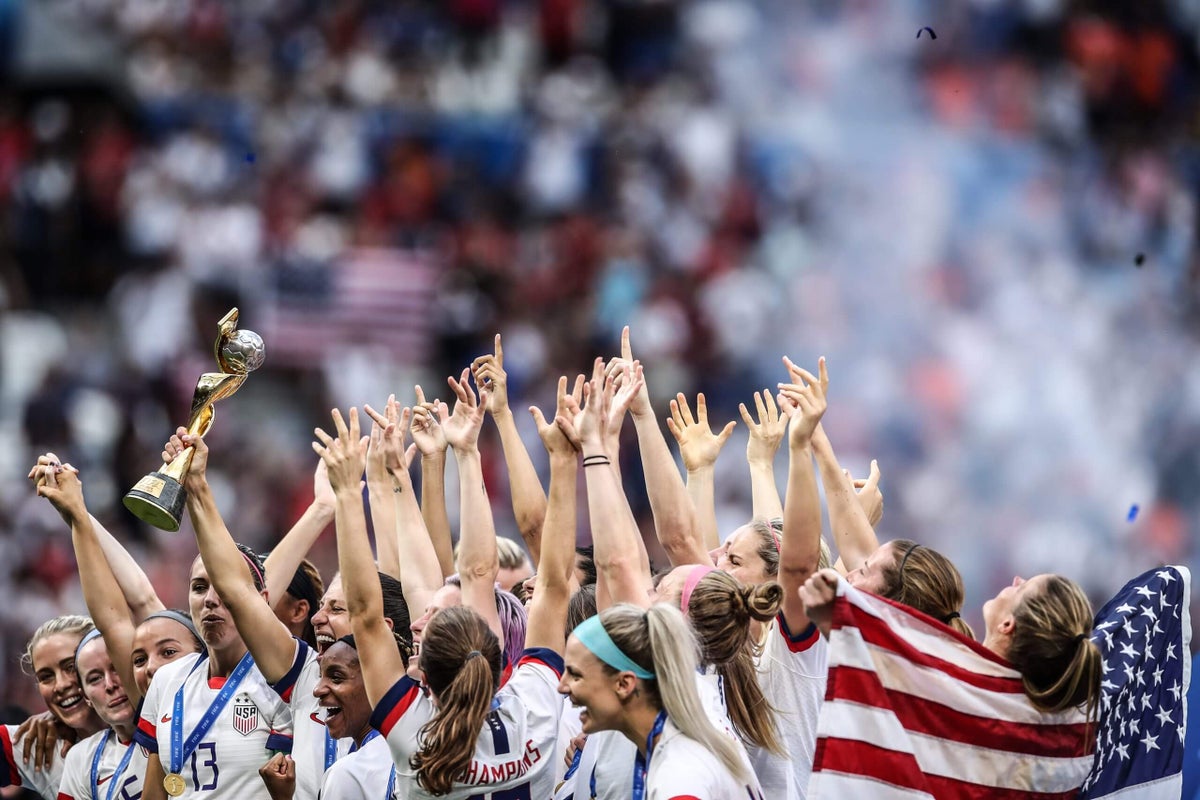LOS ANGELES — The United States has not yet formally won the bid to host the 2031 Women’s World Cup but various figures from the U.S. Soccer Federation and the NWSL are already looking six years ahead to harness the power of hosting the tournament.
“It gives us something to work towards that we know from history can change the interest level in women’s soccer,” NWSL commissioner Jessica Berman told The Athletic before the U.S. women’s national team face Brazil on Saturday, a rematch of the 2024 Paris Olympics gold medal match.
FIFA president Gianni Infantino said on Thursday that the U.S. submitted the only “valid bid” to host the 2031 tournament before the governing body’s deadline. FIFA later announced that the U.S. submitted a joint bid with “other member associations from Concacaf (to be confirmed in due course).”
The longer runway allows for significant planning time, especially with the potential to build upon hosting the 2026 men’s World Cup alongside Mexico and Canada, and the 2028 Los Angeles Olympics.
U.S. Soccer CEO J.T. Batson stressed that the bid includes growing the game across the region through Concacaf participation, and pointed to Friday’s announcement of Washington Spirit owner Michele Kang doubling down on her investment in U.S. Soccer with a $25 million contribution. Batson said this will allow the federation to be better prepared for 2031.
“Your ability to use the World Cup as a catalyst is before, not after,” Batson said. “So starting way early on, that is something that we’re really excited about.”

Michele Kang with U.S. Soccer CEO J.T. Batson. (Mike Lawrence / Getty Images for USSF)
Details about what the bid includes are thin, with Mexico absent on paper after their previous co-host billing from the 2027 bidding process. However, Batson called the U.S. a “co-host” rather than a host. Many of the details, he said, depend on the tournament potentially expanding to a 48-team endeavor, which he said is something U.S. Soccer has been “passionate supporters for.”
“We think it would be incredible for growing the women’s game,” Batson told reporters on Friday.
“One of the things we hear from folks who lead federations around the world is they view the Women’s World Cup as an opportunity for them to 1. make a World Cup, and 2., really go compete in a way they wouldn’t be able to on the men’s side,” Batson said. With U.S. Soccer president Cindy Parlow Cone now a member of the FIFA Council, it’s another chance for the federation to advocate for tournament expansion.
Beyond U.S. Soccer, the NWSL stands to benefit from the third Women’s World Cup on home soil — and the first with a professional league in a position to take advantage of the tournament bump.
“Hopefully, this will be a catalyst for a lot of cities,” Kang, whose Washington Spirit was a beaten finalist in the NWSL last year, said following the SheBelieves Summit at a small media roundtable. “Even from an infrastructure perspective, I’m trying to convince our area that the World Cup is coming and Washington, D.C. could be the center of women’s football, not just government and political power. We’re trying to use that as an opportunity to expand the presence and get women’s football squarely in the mainstream.”
Angel City CEO and co-founder Julie Uhrman was enthusiastic about what hosting the World Cup could offer all levels of the sport.
“It’s more visibility for women’s football, it’s more access to see incredible athletes,” Uhrman said. “Then the idea that most of them play in the NWSL, and you can continue to see them every single month following the World Cup, it’s a huge opportunity, not only for the league but to grow the sport from the grassroots level all the way to the professional level.”
Existing and potential NWSL markets stand to benefit six years down the line, a landscape that Berman has aspirations to expand as large as the NFL.
With Denver and Boston entering the league in 2026 before the men’s World Cup, there are no signs that the NWSL will stop there. Berman said that while expansion plans have been based on the league’s business, a 2031 World Cup in the U.S. could provide an additional filter for the league to consider.
“I’m very confident that our expansion will continue between now and then, so this will certainly give us even more reason to be bullish on our expansion plan,” Berman said. “Seeing how the country reacts to the men’s World Cup next year will be really important. We’re already working closely with FIFA and the host committees, even though it’s the men’s World Cup, to capitalize on it being here. Through that, we can formulate a plan that will take us through 2031.”
(Top photo: Alex Grimm / Getty Images)

